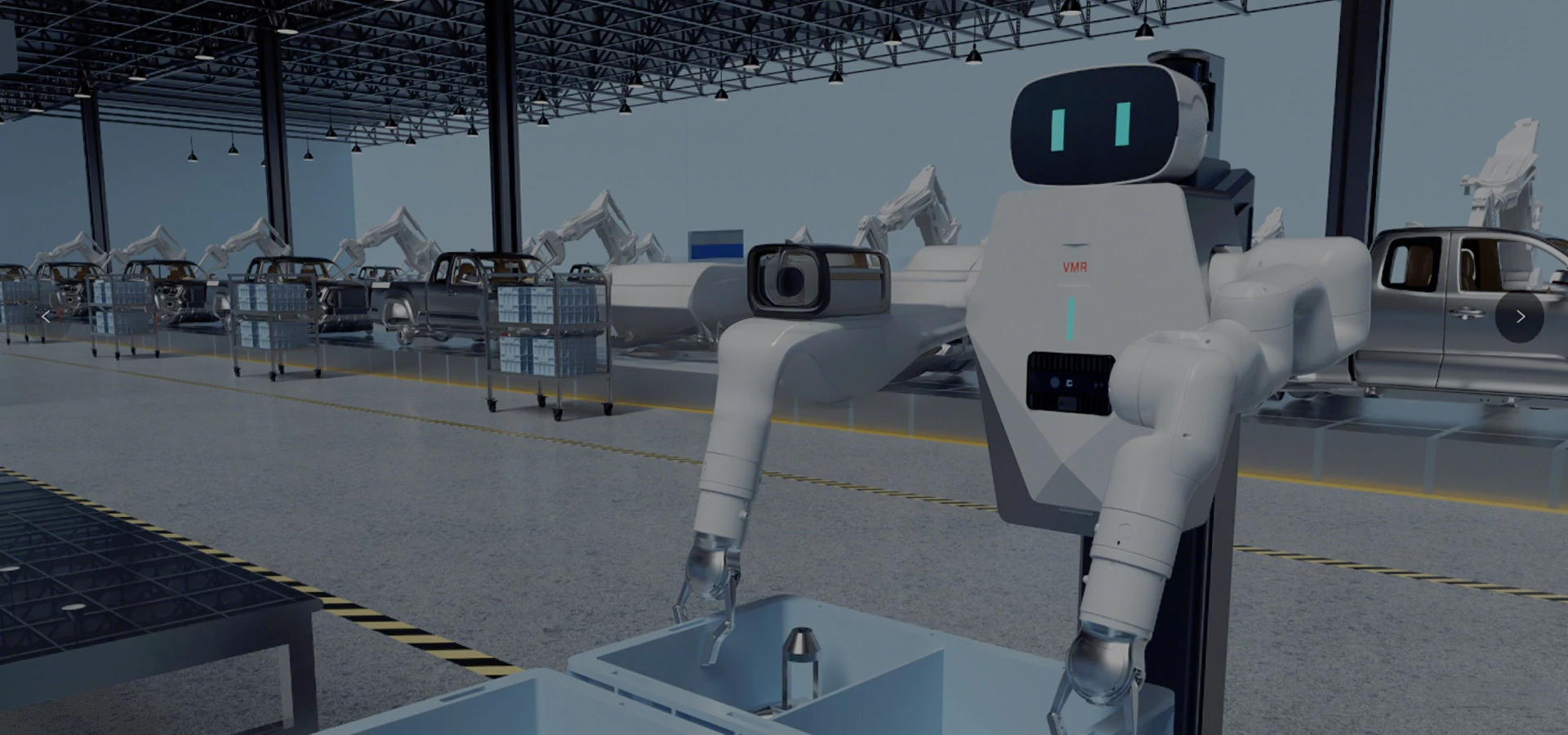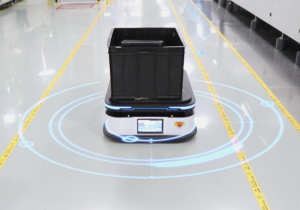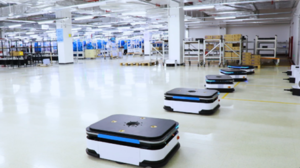In the rapidly advancing world of robotics, vision systems are critical for enabling robots to perceive, understand, and interact safely and effectively with their environments. Among the various vision technologies available, cameras play an indispensable role, especially in enhancing robotic vision and obstacle avoidance. Whether it’s autonomous vehicles navigating busy streets, industrial robots performing precise tasks, or mobile robots maneuvering complex indoor spaces, the quality and capability of the cameras installed directly impact their performance and safety.
This article explores the best cameras for robots available today, focusing on how they enhance vision and obstacle avoidance capabilities. We will cover the types of cameras, key features, technologies behind them, practical applications, and factors to consider when choosing the right camera for your robotic system.
Why Cameras Matter for Robots
Robots rely on sensors to interpret the world around them. Among these sensors, cameras provide rich, detailed visual data that other sensors like lidar or ultrasonic detectors cannot fully replicate. Cameras capture images or video streams that robots use to detect objects, recognize patterns, measure distances, and identify obstacles.
For obstacle avoidance, having a clear and accurate visual perception is crucial. The robot needs to detect obstacles in its path early and make quick decisions to avoid collisions. Cameras equipped with advanced imaging technology can provide:
-
Depth perception: Understanding how far obstacles are, often using stereo or RGB-D cameras.
-
Wide field of view (FOV): Capturing a broad scene so the robot can monitor multiple directions simultaneously.
-
High resolution and frame rate: For precise object detection and smooth tracking, especially at high speeds.
-
Robustness in various lighting conditions: Ensuring reliable performance in bright sunlight, shadows, or low-light environments.
These capabilities translate into safer and more efficient robotic operation.
Types of Cameras Used in Robotics
MRDVS provides three specialized camera series tailored to different robotic vision and obstacle avoidance needs. Here’s a breakdown of each type with their key features:
1. H-Series Structured Light Cameras
Key Features:
-
Highly accurate 3D spatial mapping
-
Ideal for indoor environments with controlled lighting
-
Excellent for precision tasks like object detection and industrial inspection
-
Captures fine surface details for high-resolution depth data
-
Suitable for indoor manipulation tasks
2. M-Series Time-of-Flight (ToF) Cameras
Key Features:
-
Accurate depth measurement
-
Performs well under varying lighting conditions (daylight and low light)
-
Compact and lightweight design for easy integration
-
High frame rates for real-time depth sensing
-
Suitable for outdoor mobile robots and autonomous vehicles
3. S-Series Obstacle Avoidance Cameras
Designed specifically for obstacle avoidance,
these cameras combine RGB and depth sensing with a wide field of view for efficient navigation.
Key Features:
-
Long-Range & Blind-Spot-Free Detection
-
Utilizes dToF technology for 18m long-range sensing and maintains high precision (±5cm) even within 30cm proximity, eliminating blind zones.
-
High-density point cloud (576,000 points/sec) enables accurate detection of low-height obstacles (e.g., forklift arms).
-
Superior Anti-Interference Performance
-
Functions reliably under 100kLux outdoor glare and resists ambient light interference (e.g., window reflections).
-
IP67-rated design ensures durability in harsh environments (warehouses, ports).
-
Multi-Robot Coordination
-
Multimodal Perception Fusion
-
RGB-D spatiotemporal synchronization enhances 3D reconstruction and semantic segmentation.
-
Semantic obstacle recognition (e.g., pallets, personnel) enables dynamic avoidance strategies (stop, detour, or slow-down).
-
Integrated Algorithm & Fast Response
-
Built-in real-time avoidance algorithms and I/O interfaces enable millisecond-level decision-making.
-
Supports safety zone monitoring (e.g., detecting human intrusion in forklift zones) and expands to access control and gesture recognition.
By choosing the right MRDVS camera series, developers can equip robots with vision systems that precisely meet their operational and environmental demands.
Key Technologies Enhancing Robot Cameras
Modern robotic cameras are equipped with advanced technologies that significantly improve their vision capabilities, enabling precise obstacle detection and efficient navigation. These key innovations ensure that robots can operate safely and effectively in diverse and dynamic environments.
a. High-Resolution Sensors
High-resolution sensors are fundamental to capturing detailed images that allow robots to analyze their surroundings with precision. Modern sensors range from standard VGA quality up to 4K and beyond, providing crisp visuals. The increased pixel count helps robots detect smaller or more distant obstacles that might otherwise go unnoticed. This level of detail is crucial in complex environments where fine distinctions can mean the difference between safe navigation and collision.
b. Wide Field of View (FOV)
A wide or ultra-wide-angle lens greatly expands the robot’s visible area, minimizing blind spots and enhancing situational awareness. This broader perspective is essential for mobile robots that must monitor multiple directions simultaneously to detect obstacles approaching from the sides or behind. By covering more ground visually, robots can make faster and safer decisions to avoid collisions, especially in crowded or fast-changing environments.
c. Infrared (IR) Illumination
Infrared illumination enables depth cameras to function effectively regardless of external lighting conditions. By emitting
IR light invisible to the human eye, these cameras can consistently detect and measure distances to objects even in darkness or harsh lighting. This technology ensures reliable depth sensing indoors and outdoors, making it indispensable for robots operating in varying environments and lighting scenarios.
d. High Frame Rates
For robots that move quickly or navigate dynamic spaces, capturing images at high frame rates is critical. Cameras capable of 30 frames per second (FPS) or more provide real-time visual feedback, allowing robots to promptly detect obstacles and react accordingly. Higher frame rates reduce motion blur and enable smoother tracking of moving objects, improving the robot’s ability to avoid collisions while maintaining efficient motion.
e. Onboard Processing
Some advanced cameras incorporate onboard processors that handle image and depth data processing internally. This integration reduces the latency caused by transmitting raw data to an external processor, resulting in faster response times. Onboard processing also offloads computational demand from the robot’s main CPU, allowing the entire system to operate more efficiently. This capability is particularly beneficial for real-time obstacle avoidance where split-second decisions are necessary.
How Cameras Help Robots Avoid Obstacles
Cameras play a vital role in enabling robots to perceive their environment and navigate safely. By capturing visual and depth information, cameras allow robots to identify and respond to obstacles in real-time across various industries and applications.
-
Autonomous Mobile Robots (AMRs)
Autonomous Mobile Robots rely on cameras combined with other sensors to safely navigate complex environments like warehouses, hospitals, and factories. Cameras help these robots detect obstacles such as humans, pallets, or machinery, enabling efficient route planning and collision avoidance. This ensures smooth and safe operation even in dynamic and crowded settings.
-
Self-Driving Vehicles
In autonomous vehicles and drones, cameras provide critical visual data to identify other cars, pedestrians, traffic signs, and unexpected hazards. When integrated with lidar and radar systems, cameras contribute to a comprehensive perception system that enhances situational awareness and decision-making. This multi-sensor approach helps vehicles navigate safely and adapt to changing road conditions.
-
Agricultural Robots
Agricultural robots depend heavily on cameras to maneuver uneven terrain while avoiding plants, animals, and obstacles. Using
RGB-D cameras, these robots can segment crops from the surrounding environment, allowing precise harvesting, inspection, and treatment. This technology increases efficiency and reduces crop damage during field operations.
-
Industrial Robots
On production lines, industrial robots utilize cameras for quality control and obstacle detection. When working alongside human operators, cameras help prevent accidents by recognizing people and unexpected objects in the robot’s workspace. This capability is essential for maintaining safety and productivity in collaborative manufacturing environments.
How to Choose the Best Camera for Your Robot
Selecting the ideal camera for your robot depends on various factors such as its intended tasks, operating environment, and budget constraints. Keep these key considerations in mind to make an informed choice:
-
Depth Accuracy Requirements: If your robot needs precise obstacle detection and complex navigation, cameras with accurate depth sensing like RGB-D or Time-of-Flight (ToF) are highly recommended. For simpler applications where depth can be estimated through other means, stereo or monocular cameras may be sufficient.
-
Environmental Conditions: Consider the lighting and environmental conditions where the robot will operate. For outdoor or variable lighting environments, cameras equipped with infrared (IR) illumination and high dynamic range (HDR) imaging perform better by maintaining reliable vision regardless of light changes.
-
Field of View (FOV): Choose a camera with a field of view wide enough to cover the robot’s surrounding area. In some cases, multiple cameras may be necessary to provide full 360-degree vision for comprehensive obstacle detection and situational awareness.
-
Processing Capability: Cameras with onboard processing can handle image and depth data internally, reducing latency and easing the computational load on the robot’s main processor. Assess your robot’s processing power and the need for real-time responsiveness when selecting a camera.
-
Size and Weight: For mobile robots, compact and lightweight cameras are preferable to avoid adding bulk or excessive power consumption, which can impact mobility and battery life.
-
Compatibility and SDK Support: Ensure that the camera is compatible with your robot’s hardware and software ecosystems. Availability of software development kits (SDKs) or application programming interfaces (APIs) is essential for smooth integration and customization.
Conclusion
Choosing the best cameras for robots is key to improving vision and obstacle avoidance. With options like RGB-D and ToF sensors, you can tailor your robot’s vision system to any environment. Leading brands such as MRDVS offer cutting-edge cameras designed for precision and reliability. Equip your robots with MRDVS cameras today to boost their perception capabilities, ensure safer navigation, and enhance overall performance in any application.


